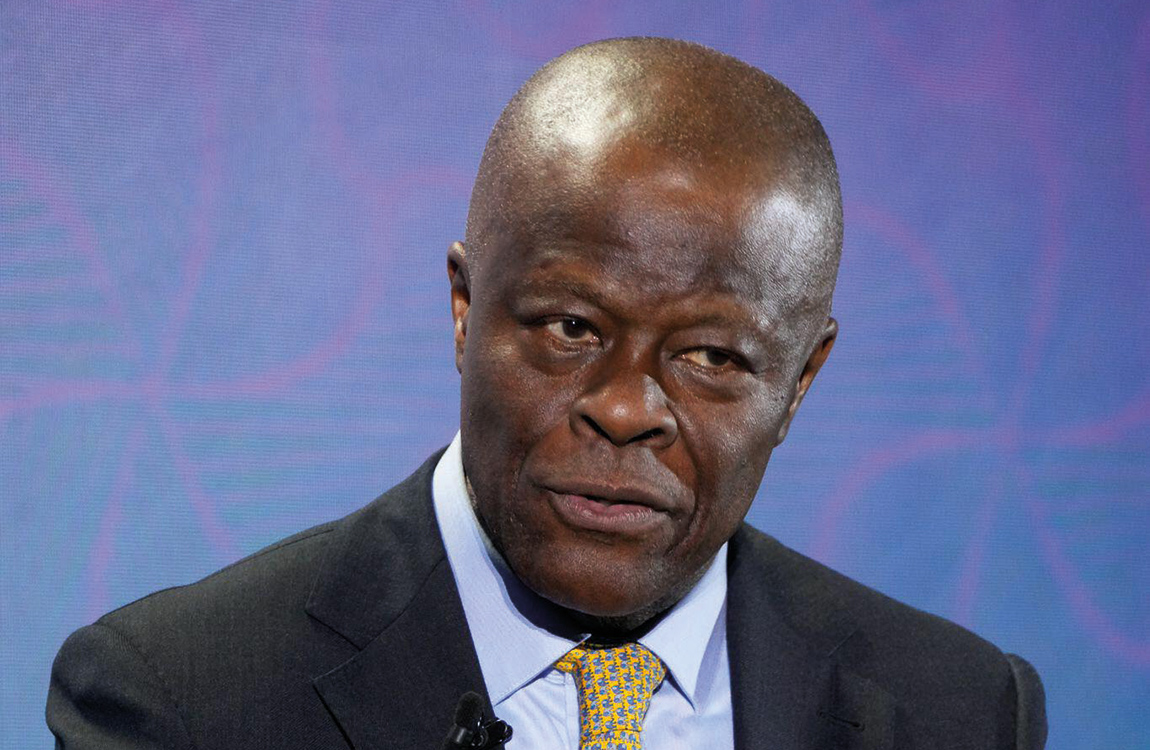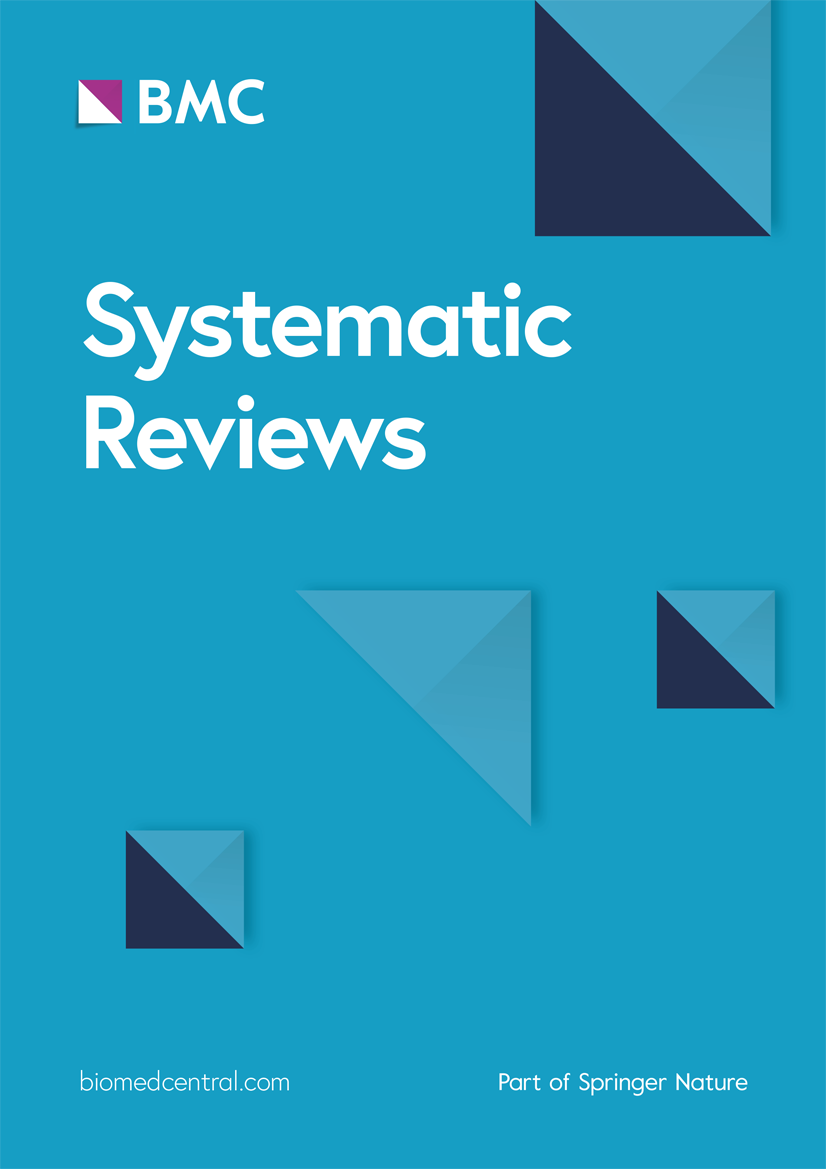Impact of exercise on health outcomes in people with cancer: an umbrella review of systematic reviews and meta-analyses of randomised controlled trials
Impact of exercise on health outcomes in people with cancer: an umbrella review of systematic reviews and meta-analyses of randomised controlled trials
FreeTo examine the comprehensive health impacts of exercise on people with cancer by systematically summarising existing evidence and assessing the strength and reliability of the associations.
Umbrella review of meta-analyses.
PubMed, Embase, Cochrane and Web of Science databases were searched from their inception to 23 July 2024.
Meta-analyses of randomised controlled trials that investigated the associations between exercise and health outcomes among people with cancer.
This umbrella review identified 485 associations from 80 articles, all evaluated as moderate to high quality using A Measurement Tool to Assess Systematic Reviews (AMSTAR). Two hundred and sixty (53.6%) associations were statistically significant (p<0.05), 81/485 (16.7%) were supported by high-certainty evidence according to the Grading of Recommendations Assessment, Development, and Evaluation criteria. Compared with usual care or no exercise, moderate- to high-certainty evidence supported the view that exercise significantly mitigates adverse events associated with cancer and its treatments (eg, cardiac toxicity, chemotherapy-induced peripheral neuropathy, cognitive impairment and dyspnoea). Exercise also modulates body composition and biomarkers (eg, insulin, insulin-like growth factor-1, insulin-like growth factor-binding protein-1 and C-reactive protein) in people with cancer, and enhances sleep quality, psychological well-being, physiological functioning and social interaction, while improving overall quality of life.
Exercise reduces adverse events and enhances well-being through a range of health outcomes in people with cancer.
Data are available upon reasonable request.
If you wish to reuse any or all of this article please use the link below which will take you to the Copyright Clearance Center’s RightsLink service. You will be able to get a quick price and instant permission to reuse the content in many different ways.
WHAT IS ALREADY KNOWN ON THIS TOPIC
WHAT THIS STUDY ADDS
HOW THIS STUDY MIGHT AFFECT RESEARCH, PRACTICE OR POLICY
Cancer represents a major societal, public health and economic challenge in the 21st century,1 2 significantly affecting physical and mental health. Compared with those without cancer, people often experience persistent symptoms, treatment-related side effects, reduced quality of life (QoL), and increased risks of recurrence and mortality. Identifying modifiable lifestyle factors, such as physical activity, is crucial for evidence-based recommendations.3
Exercise, a structured and systematic form of physical activity,4 is deemed safe and recommended for all individuals with cancer to ‘avoid inactivity.’5 6 The American Society of Clinical Oncology recommends that individuals with cancer incorporate regular aerobic exercises (AE) and resistance exercises (RE) into their regimen during active treatment,7 with similar guidelines adopted globally.8–10 Beyond aerobic and resistance training, mind–body exercises, such as Tai Chi, Qigong and yoga, are cost-effective, accessible and can be practised at home.11–13 These exercises integrate mental focus, physical movement and breath control, helping to reduce stress, improve sleep, physical function and quality of life (QoL).14–17 Growing research highlights their positive impact on cancer prognosis.14 16–18
Numerous meta-analyses have evaluated the impact of exercise on health outcomes in patients with cancer, but significant gaps remain.19–21 For example, a secondary analysis of randomised controlled trials (RCTs) revealed that a 6- month AE intervention significantly alleviated self-reported symptoms of chemotherapy-induced peripheral neuropathy (CIPN) in ovarian cancer22; however, another meta-analysis found no evidence.23 Debate continues over the effects of exercise on cognitive function,24 25 cardiotoxicity,26 27 and circulating biomarkers, such as adiponectin,28 29 C-reactive protein (CRP),30 31 insulin,29 and insulin-like growth factor (IGF).32 33 Moreover, the International Agency for Research on Cancer has assessed physical activity evidence only for survivors from breast and colorectal cancer (CRC), with limited data from RCTs.34
An umbrella review (UR) is a high-level methodology in evidence-based medicine that integrates and synthesises meta-analyses to provide a comprehensive overview of high-quality research on a specific subject.35–37 Currently, no UR has comprehensively evaluated meta-analysis evidence on exercise and health outcomes in patients with cancer. To address this gap, we conducted an UR of RCT-based meta-analyses to investigate the associations between exercise and overall health outcomes in patients with cancer, aiming to provide robust evidence supporting the clinical application of exercise in cancer care.
The UR adhered to the Preferred Reporting Items for Systematic Reviews and Meta-Analysis guidelines.38 Furthermore, the UR was officially registered in PROSPERO (CRD42024572146).
To identify systematic reviews and meta-analyses of RCTs on the association between exercise and multiple health outcomes among individuals with cancer, two investigators independently conducted a comprehensive search in PubMed, Embase, Cochrane and Web of Science databases from inception to 23 July 2024. Additionally, the references of eligible articles were manually scrutinised. The detailed search strategy is displayed in online supplemental table 1.
Two reviewers independently screened titles, abstracts, and full texts to ensure compliance with the inclusion criteria. Any differences were addressed by a third reviewer. Studies were selected based on the PICOS (Population, Intervention, Comparison, Outcome, Study design) framework (figure 1), and details can be found in online supplemental table 2.
Eight trained investigators worked in pairs to independently extract information from each eligible study. Any disparities were adjudicated by a senior investigator. Extracted details included the first author, year of publication, study design, number of cases, total population, intervention, comparison, health outcomes, mean (SD) and effect sizes with 95% CIs.
The quality of systematic reviews and meta-analyses was evaluated using the MeaSurement Tool to Assess systematic Reviews (AMSTAR) checklist, with 1 point awarded for each 'yes' answer (out of 11 items).39 The AMSTAR score was classified as high (8–11), moderate (4–7) and low (0–3).40 41 Three investigators independently assessed the quality of the reviews, with discrepancies resolved by a senior investigator.
Using the Grading of Recommendations, Assessment, Development and Evaluations (GRADE), 12 trained investigators independently assessed the certainty of evidence as high, moderate, low or very low.42 Evidence from RCTs begins as high certainty but can be downgraded based on criteria, including risk of bias, indirectness, inconsistency, imprecision and publication bias.42 43
We categorised effect sizes by intervention, comparator, population and outcomes to get a list of unique associations. Using a random-effects model, we recalculated the pooled effect size with 95% CI for associations identified in eligible meta-analyses.44 45 A P value <0.05 was deemed statistically significant. Heterogeneity was evaluated using the I2 statistic. Values exceeding 50% indicated moderate heterogeneity, and values surpassing 75% suggest large heterogeneity.46 We interpreted the standardised mean difference (SMD) analysis using Cohen’s d effect size criteria: a value of 0.2 indicates a small effect, 0.5 indicates a medium effect and 0.8 indicates a large effect.47
We conducted sensitivity analyses for significant associations with moderate-to-high certainty, excluding studies with small sample sizes (25th percentile) or high risk of bias (based on quality assessments). If no quality assessment was available or lacked specific methods and scores, we re-evaluated the primary studies included in the meta-analysis using Cochrane criteria.48–50 Additionally, we assessed the certainty of evidence from the meta-analyses excluded owing to overlapping data, ensuring whether their results aligned with main analysis. All statistical analyses were conducted using STATA version 17.
Our study examined the impact of exercise on health outcomes among individuals with cancer, across all genders, socioeconomic levels and marginalised communities. The author team, comprising 13 women and 7 men from various disciplines (obstetrics, gynaecology, epidemiology, clinical research, cardiology, and clinical laboratories), included scholars at different stages of their careers. Data collection followed a standardised method, ensuring research integrity across diverse cancer populations. Our methodology remained consistent, regardless of regional, educational or socioeconomic differences.
We identified 3070 records from four databases. After removing duplicates and screening, 80 studies with 485 associations were included in our UR (figure 2). The excluded records during the process of full-text screening are listed in online supplemental table 3.
A total of 485 associations published between 2012 and 2024 are shown in online supplemental tables 4 and 5. Among these associations, the types of exercise included mind–body exercise (138, 28.5%), AE and RE (48, 9.9%), high-intensity interval training (HIIT) (18, 3.7%) and other exercises (281, 57.9%). Additionally, these associations were explored in people diagnosed with various types of cancer, including breast (244, 50.3%), digestive system (20, 4.1%), haematological malignancies (13, 2.7%), lung (47, 9.7%), prostate (12, 2.5%) and others (149, 30.7%).
Based on the random-effects model, 260 (53.6%) and 87 (17.9%) associations respectively reached statistical significance at p<0.05 and p<10−3. Additionally, 267 (55.1%), 95 (19.6%) and 123 (25.4%) associations showed low, moderate, and high heterogeneity, respectively (online supplemental table 5).
According to the AMSTAR, 66 (82.5%) and 14 (17.5%) of 80 analyses were deemed to be of high and moderate quality, respectively (figure 3).
Approximately 81 (16.7%) and 152 (31.3%) of the meta-analyses remained high and moderate certainty, respectively. Additionally, the remaining 177 (36.5%) and 75 (15.5%) associations were classified as having low or very low certainty, respectively (online supplemental table 6).
We summarised 55 (11.3%) associations between exercise and cancer-related adverse reactions and prognosis among people with cancer, which had adverse effects (eg, CIPN, cardiac toxicity, etc; 31/485, 6.4%) and prognosis (eg, mortality, postoperative complications, etc; 24/485, 4.9%). Nine (1.9%) or 485 associations exhibited high certainty, while 16 (3.3%) demonstrated moderate certainty (online supplemental figure 1a).
Cancer-related cognitive impairment, cardiac toxicity, CIPN and gastrointestinal symptoms
One case of high-certainty evidence demonstrated that exercise improved cancer-related cognitive impairment in people (≥18 years) with cancer (SMD=0.27, 95% CI 0.20 to 0.35).51 Additionally, moderate-certainty evidence supported the view that mind–body exercise improved cognitive function in people with lung cancer (SMD=1.09, 95% CI 0.47 to 1.71).16 In the context of cardiac toxicity, moderate-certainty evidence supported the view that combined training enhanced left ventricular ejection fraction (LVEF) in women with breast cancer (BC) (SMD=1.45, 95% CI 0.84 to 2.06).52 Furthermore, moderate-certainty evidence indicated that overall exercise interventions effectively alleviated the symptoms of CIPN in people with cancer who were undergoing, or had completed, chemotherapy (SMD=−0.53, 95% CI −0.83 to –0.23).53 For gastrointestinal symptoms, moderate-certainty evidence highlighted the effectiveness of yoga in alleviating symptoms in women with BC (SMD=−0.39, 95% CI −0.54 to –0.25).54
Length of stay in the hospital, postoperative complications and mortality
High-certainty evidence indicated that preoperative AE combined with other forms of exercise reduced the risk of postoperative pulmonary complications (RR=0.50, 95% CI 0.38 to 0.66) among people with non-small-cell lung cancer.55 Moderate-certainty evidence supported the view that preoperative exercise shortened postoperative hospital stays (mean difference (MD)=−2.29, 95% CI −3.59 to –0.99), reduced the risk of clinically relevant postoperative complications (RR=0.42, 95% CI 0.25 to 0.69) and reduced dyspnoea (SMD=−0.45, 95% CI −0.78 to –0.12) in this population.55 56 Furthermore, exercise improved dyspnoea in people with advanced-stage cancer (SMD=−0.18, 95% CI −0.36 to 0.00),57 as supported by moderate-certainty evidence. Additionally, moderate-certainty evidence demonstrated a significant association between exercise and reduced mortality among people with cancer (risk ratio (RR)=0.76, 95% CI 0.62 to 0.93).58
We found 67 (13.8%) associations between exercise and body and strength assessment, including body mass index (BMI) (7/485, 1.4%), body composition (25, 5.2%) and biomarkers (35, 7.2%); 12 (2.5%) and 18 (3.7%) associations showed high and moderate certainty, respectively (online supplemental figure 1b).
BMI
Two analyses with high-certainty evidence demonstrated that exercise increased BMI among women with stage II+ BC (SMD=0.17, 95% CI 0.02 to 0.33), but decreased BMI among people with cancer who had completed their main treatment (MD=−0.62, 95% CI −1.19 to –0.06).20 59
Body fat
Exercise was associated with a reduced fat percentage in people with early-stage BC (MD=−1.46, 95% CI −1.95 to –0.98), increased lean body mass in people with prostate cancer (MD=0.88, 95% CI 0.40 to 1.36) and reduced body fat rate and body fat mass (MDbody fat rate=−0.93, 95% CI −1.39 to –0.47; MDbody fat mass=−0.60, 95% CI −1.10 to –0.10) in people with prostate cancer.60 61 These above associations were graded as moderate-certainty evidence.
Biomarkers
One high-certainty association supported the view that a combination of AE and RE was effective in reducing serum insulin (SMD=−0.49, 95% CI −0.94 to –0.05).62 Three moderate-certainty associations indicated that AE, RE, and mind–body exercises reduced serum concentrations of IGF-1 (weighted mean difference=−19.95, 95% CI −22.67 to –17.23),63 IGFBP-1 (IGF binding protein-1) (SMD=−0.35, 95% CI −0.67 to –0.04)64 and CRP levels (SMD=−0.49, 95% CI −0.93 to –0.04)62 in women with BC.
A total of 172 (35.5%) associations were summarised, including anxiety (21/485, 4.3%), depression (28, 5.8%), sleep problems (47, 9.7%), QoL (63, 13.0%) and other emotional status (13, 2.7%); 32 (6.6%) and 45 (9.3%) associations showed high and moderate certainty, respectively (online supplemental figure 1c).
Sleep problems
Notably, six associations with high certainty supported the view that yoga reduced short-term sleep disturbance in women with BC (SMD=−0.26, 95% CI −0.45 to –0.06).65 Additionally, two analyses with high-certainty evidence indicated that exercise alleviated insomnia in people with advanced-stage cancer (SMD=−0.36, 95% CI −0.56 to –0.17),57 combined training mitigated the decline in sleep quality among people with cancer (SMD=−0.25, 95% CI −0.43 to –0.06).66 Furthermore, exercise during and after treatment decreased the Pittsburgh Sleep Quality Index score (SMD=−0.28, 95% CI −0.44 to –0.11), and reduced self-reported sleep problems (SMD=−0.32, 95% CI −0.54 to –0.10).67
QoL
Yoga improved the short-term, health-related QoL (HRQoL) of people with BC (SMD=0.24, 95% CI 0.04 to 0.45).65 Exercise improved thhe physical HRQoL of people with lung cancer (SMD=0.69, 95% CI 0.47 to 0.90),68 as well as the overall QoL of older people with CRC undergoing chemotherapy (SMD=0.23, 95% CI 0.02 to 0.44)69 and people with BC (SMD=0.88, 95% CI 0.40 to 1.36).70 All these four associations reached high certainty.
Anxiety
One analysis with high-certainty evidence showed that Qigong and Tai Chi relieved anxiety in people (≥18 years) with cancer (SMD=0.29, 95% CI 0.18 to 0.40).71 Additionally, moderate-certainty evidence showed that yoga reduced anxiety in women with BC (SMD=−0.98, 95% CI −1.39 to –0.57).54
Depression
Post-diagnosis exercise (SMD=−0.24, 95% CI −0.42 to –0.05), post-radiotherapy exercise (SMD=−0.50, 95% CI −0.97 to –0.04) and exercise combined with yoga or spiritual growth (SMD=−0.38, 95% CI −0.62 to –0.13) were linked to decreased depression among women with BC,72–74 supported by moderate-certainty evidence.
Other emotional status
High-certainty evidence from one analysis demonstrated that exercise enhanced the psychological well-being of elderly people with CRC undergoing chemotherapy (SMD=0.29, 95% CI 0.16 to 0.41).69
There were 191 (39.4%) associations evaluating exercise and pain (10/485, 2.1%), physical health (10, 2.1%), social function (15, 3.1%), muscular strength (15, 3.1%), fatigue (66, 13.6%) and physical function (75, 15.5%); 28/485 (5.8%) and 73 (15.1%) associations exhibited high and moderate certainty, respectively (online supplemental figure 1d).
Physical function
Preoperative AE combined with other forms of exercise improved the 6-minute walk test in people with non-small-cell lung cancer (SMD=0.27, 95% CI 0.10 to 0.44), indicating an effect size between small and moderate.55 Additionally, exercise during or after chemotherapy enhanced peak oxygen uptake (VO2peak) in people with cancer (MD=2.46, 95% CI 1.44 to 3.47),75 where the upper limit exceeds the minimal clinically important difference value of 2.5. AE, RE and supervised exercise improved physical function in women with BC (SMD=0.19, 95% CI 0.05 to 0.33), indicating a small effect size.76 HIIT improved aerobic fitness (SMD=0.54, 95% CI 0.37 to 0.71) of people (≥18 years) with cancer, indicating an effect size between moderate and large.77 All associations were supported by high-certainty evidence (figure 4).
Figure 4
Forest plot of the impact of exercise on physical function in people with cancer and the minimum clinically important difference. AE, aerobic exercise; HIIT, high-intensity interval training; MCID, minimal clinically important difference; QoL, quality of life; RE, resistance exercise; VO2peak, peak of oxygen consumption; 6MWD, 6-minute walk distance, β, regression coefficients.
Physical health
Short-term exercise (AE and/or RE) improved physical and general health in people with digestive cancer (SMDphysical=0.22, 95% CI 0.00 to 0.45; SMDgeneral=0.34, 95% CI 0.04 to 0.63),78 supported by high-certainty evidence. Two analyses of moderate-certainty evidence supported the view that weight-training exercise improved the physical health score of women with BC-related lymphoedema (SMD=0.34, 95% CI 0.09 to 0.58),79 and exercise enhanced physical fitness in people with CRC (SMD=0.59, 95% CI 0.25 to 0.93).80
Muscular strength
Three associations with high-certainty evidence supported the view that among women with BC, weight training exercise improved arm strength (SMD=0.30, 95% CI 0.14 to 0.46),81 chest press (SMD=0.91, 95% CI 0.74 to 1.08) and leg press (SMD=0.70, 95% CI 0.48 to 0.92).79 Moderate-certainty evidence indicated that Tai Chi enhanced arm strength in women with BC within 12 weeks (SMD=0.44, 95% CI 0.20 to 0.68),81 and that exercise during and after treatment enhanced upper body strength in women with stage II+ BC (SMD=0.43, 95% CI 0.17 to 0.69).59
Fatigue and pain
Two analyses with high-certainty evidence demonstrated that combined HIIT programmes (SMD=0.66, 95% CI 0.42 to 0.89),82 and walking combined with RE (SMD=−0.37, 95% CI −0.57 to –0.17),83 significantly improved cancer-related fatigue in individuals with cancer. Additionally, RE alone has been shown to effectively reduce general fatigue in women with BC (SMD=−0.28, 95% CI −0.48 to –0.08)84 and among people undergoing cytotoxic treatment for cancer (SMD=−0.32, 95% CI −0.47 to –0.16).85 For pain management, two analyses with moderate-certainty evidence supported that Tai Chi alleviated pain among women with BC (SMD3 weeks=0.27, 95% CI 0.11 to 0.44; SMD12 weeks=0.30, 95% CI 0.08 to 0.51).81 Similarly, HIIT and combined HIIT programmes have been linked to pain reduction in patients with cancer (SMD=0.44, 95% CI 0.24 to 0.65).82
Social function
Yoga enhanced social well-being in women with BC (MD=1.36, 95% CI 0.12 to 2.61).86 Furthermore, exercise improved social function (SMD=0.18, 95% CI 0.02 to 0.34), and the rate of return to work (RR=1.31, 95% CI 1.18 to 1.46) among people with cancer.57 87 These associations were supported by moderate-certainty evidence.
Several sensitivity analyses of significant associations with certainty greater than moderate according to GRADE were conducted. Excluding studies with a high risk of bias effectively mitigated bias.42 Consequently, four associations were upgraded from moderate to high certainty: supervised exercise improved QoL,88 exercise during treatment enhanced physical function,76 HIIT alleviated cancer-related fatigue82 and programmes that integrated yoga or focused on spiritual growth alongside physical activity alleviated symptoms of depression (online supplemental table 7).74 Compared with the largest trial in the meta-analysis, smaller and medium-sized trials exhibited greater treatment effects.89–92 After excluding RCTs with small sample sizes (below the 25th percentile), the evidence level for five associations was downgraded from moderate to low. The involved outcomes included cognitive function16 and fatigue (online supplemental table 8).85 Additionally, 21 associations were excluded owing to overlap. Certainty was upgraded for two associations.52 85 Seven associations were downgraded,76 79 93–97 while 12 associations maintained their original certainty status (online supplemental table 9).55 63 76 79 96 98 99 Finally, these associations excluded owing to insufficient data for quantitative synthesis are summarised in online supplemental table 10, showing general alignment with the main findings.
This UR provides a detailed assessment, confirming that exercise significantly improves various health outcomes in patients with cancer.
Cancer surgery often leads to high postoperative complication rates, hindering recovery and increasing healthcare costs.100–102 Preoperative interventions, including exercise, nutrition and psychological support, have gained attention for optimising health and reducing complications.103–107 The findings confirmed that preoperative AE and RE moderately reduced pain and dyspnoea in patients with lung cancer undergoing surgery, shortened hospital stays and decreased complication rates.55 56
Chemotherapy and targeted therapies can cause cognitive impairment, peripheral neuropathy and cardiotoxicity.108–110 Exercise, with its anti-inflammatory and neuroprotective properties,111 112 improves cerebral perfusion and supports the development of the prefrontal cortex and hippocampus.113 114 Our findings confirmed that AE and RE moderately enhance cognitive function in patients with BC undergoing haematopoietic stem cell transplantation, aligning with prior research.115–117 Mind–body exercises such as yoga, Tai Chi and Qigong improved cognitive function in patients with lung cancer. However, the level of evidence for this association was downgraded from moderate to low in sensitivity analyses after excluding small sample sizes. Therefore, further research with larger sample sizes is necessary to fully elucidate the potential benefits of mind–body exercises on cognitive function in this cancer population.
The impact of exercise on CIPN symptoms is debated, but most studies, including ours, showed significant improvements.22 23 118 119 Multifaceted regimens with nerve gliding and sensory-motor-based strategies effectively alleviated CIPN symptoms and postural stability deficits.53 Neurosensory exercises are emphasised as beneficial for cancer populations with CIPN. Regarding cardiotoxicity, AE mitigated chemotherapy-induced effects by preserving LVEF and improving cardiorespiratory function.52 However, evidence on its effectiveness when combined with chemotherapy is mixed, with some studies showing no impact on LVEF but reduced strain damage.26 27 Further research is needed to clarify the role of exercise in preventing cardiotoxicity.
Individuals undergoing treatment for breast or prostate cancer, often experience weight gain or obesity.120–122 Obesity disrupts physiological processes, creating a tumor-promoting microenvironment.123 Our findings indicated that varied exercises (AE, combined exercise, mind–body exercise and RE) reduced obesity, lowered body fat and improved lean body mass. It is important to highlight those studies exclusively comprising people with stage II+ BC, where a slight increase in BMI was observed following supervised exercise interventions. However, when studies included people with various types of cancer who underwent Tai Chi interventions, BMI declined. This discrepancy might be partly attributed to differences in exercise modalities. Supervised programmes may include resistance training, which could increase muscle mass and raise BMI,124 whereas Tai Chi, a low-impact exercise, may promote weight loss.125 Sensitivity analysis focusing on high-quality RCTs confirmed that exercise significantly lowers BMI (MD=−0.60, 95% CI −1.16 to –0.03) and renders the BMI increase non-significant (SMD=0.12, 95% CI −0.09 to 0.33). Thus, initial BMI increases should be interpreted cautiously, emphasising the need for more high-quality studies and tailored approaches to exercise.
Clinical research has shown that the IGF-1/IGF-1R axis and elevated IGF-1 levels are associated with cancer progression,126–128 poor prognoses129 and increased all-cause mortality.129 Insulin and IGF-1 activate the PI3K/Akt/mTOR and Ras/Raf/MAPK signalling pathways and promote tumour proliferation. Our findings indicated that AE, RE and mind–body exercises reduced serum concentrations of IGF-1 and IGFBP-1 in BC survivors. CRP is a well-established marker of inflammation in cancer,130 and raised CRP levels are associated with advanced disease stages in various types of cancer.131–134 Our findings indicated that a combination of AE and RE was particularly effective in reducing serum insulin and CRP levels in BC survivors.62 Moderate-intensity AE significantly reduced CRP levels in people with stage III colon cancer, but showed no substantial effect in stage I–II colon cancer.135 Similarly, individualised exercise programmes effectively lowered CRP levels in people with lung cancer undergoing chemotherapy,136 whereas no significant impact was observed in people with ovarian cancer.137 These findings highlight the need for future research to delineate the variations across different types of cancer and to comprehensively investigate the mechanisms by which exercise regulates these biomarkers, as well as their potential clinical implications.
Cancer diagnosis and treatment often lead to psychological distress, with moderate to severe depression affecting 15% of people, and mild depression and anxiety at rates of 20% and 10%, respectively.138 139 Long-term survivors also face heightened risks of depression and anxiety.140 Our findings suggested that taking part in exercise greatly enhanced sleep quality, reduced insomnia and alleviated anxiety and depression in people with cancer, thus improving their overall QoL. Specifically, yoga and comprehensive exercise have been shown to positively affect sleep quality,66 67 while Tai Chi and Qigong were effective in reducing anxiety.71 Interventions combining yoga or spiritual growth with physical activity, as well as exercise post-radiotherapy or post-diagnosis, are supported by moderate evidence indicating their potential to alleviate depression.72–74 Notably, exercise improved QoL across various cancer types, including BC, lung cancer, and among elderly people with CRC undergoing chemotherapy.68 69 Additionally, yoga was found to enhance short-term health-related QoL in BC.65 Our findings highlighted the significant benefits of mind–body exercises (Tai Chi, yoga and Qigong) in improving sleep, addressing emotional challenges and enhancing QoL in people with cancer. This provides a valuable complement to existing guidelines, which mainly emphasise moderate to high-intensity AE and RE.8 9 141 142
Up to 80% of cancer populations experience significant VO2peak impairment,143 which is strongly linked to higher treatment-related toxicity,144 poor QoL,145 fatigue146 and increased mortality.143 147 Exercise therapy has been shown to significantly improve VO2peak, especially in patients with BC.19 Our study showed that exercising during chemotherapy resulted in greater VO2peak improvements compared with post-chemotherapy exercise, particularly in people with breast, colon and other cancers. These findings highlighte the critical importance of maintaining an exercise regimen throughout the entire chemotherapy period.
HIIT, AE and RE significantly improved body strength and aerobic capacity, with HIIT notably alleviating cancer-related fatigue and pain. These findings aligned with the conclusions of the OptiTrain Trial,148 149 which confirmed that RE and HIIT during chemotherapy improved muscle strength, reduced pain sensitivity and prevented cardiopulmonary decline in people with BC. Mind–body exercises like yoga, aerobic resistance interval training and Tai Chi also enhanced physical functioning,16 including in those with advanced stage disease.57 Tai Chi and progressive resistance training were particularly effective for bolstering lower-body strength.150 Tai Chi improved shoulder function in people with BC within 3 weeks and effectively reduced pain and enhanced arm strength by 12 weeks.81 Social support plays a vital role in stress management and trauma recovery for those with cancer.151 152 Given that cancer often reduces social interactions, our research showed that regular exercise improves social functionality, increases the likelihood of returning to work, and notably, yoga significantly enhances overall social well-being.
We conducted a comprehensive and up-to-date assessment of systematic reviews and meta-analyses on the health outcomes of exercise in people with cancer. A thorough search across authoritative databases was followed by independent screening, data extraction, recalculations of effect sizes and methodological quality evaluations using AMSTAR criteria, with sensitivity analyses ensuring robust findings. Only RCT-based meta-analyses were included, enhancing reliability and accuracy, with 49% of associations rated as high or moderate certainty based on GRADE guidelines. Our study encompasses a broad spectrum of health outcomes, diverse cancer types and exercise interventions, including not only aerobic and resistance training but also mind–body practices. This broad and clinically significant approach provides valuable, generalisable insights for improving QoL in cancer populations and informing fitness and healthcare professionals.
Several limitations of our study need to be acknowledged. First, the GRADE assessment indicated heterogeneity (I² > 50%) and imprecision (continuous variables with total population size <400; binary categorical variables with events <300) in various meta-analyses. One potential contributing factor is the small sample sizes—48% of meta-analyses included fewer than five original studies—resulting in inconsistent findings and imprecise estimates. This affected outcomes such as anxiety, adiponectin levels, glucose levels, interleukin-10/interleukin-6 ratios, tumour necrosis factor-α levels and vascular endothelial growth factor expression. Variability in handling diverse effect estimates, despite their conceptual comparability, and differences in cancer types, exercise parameters (eg, intensity, duration, frequency), outcome assessment criteria and follow-up periods further contributed to heterogeneity and low-certainty evidence for certain outcomes like cognitive function, early-to-atrial filling velocity ratio and cardiorespiratory fitness. However, low-certainty evidence does not negate potential associations, particularly as future studies generate more data.
Second, the broad nature of an UR limited our ability to account for specific confounding factors or mediators related to exercise interventions. Most current evidence on the effectiveness of exercise during or after cancer treatment derived from RCTs involving supervised or home-based exercise, primarily focusing on survivors of common cancers (eg, breast and lung cancer). These participants often met strict eligibility criteria—such as age, comorbidities and physical capability—leading to samples that were healthier and more motivated than the broader cancer populations. It is recognised that demographic differences, including treatment side effects, vary among cancer populations by type of malignancy; therefore, more research is needed to enhance specificity within exercise oncology literature to better address a wider range of cancer types and stages.
In conclusion, this study reinforces the efficacy of incorporating exercise into cancer treatment protocols. Moderate- to high-certainty evidence showed that exercise, compared with usual care or no exercise, significantly reduced cancer-related adverse events (eg, cardiotoxicity, CIPN, cognitive impairment and dyspnoea), improved body composition and biomarkers (eg, insulin, IGF-1, IGFBP-1 and CRP), enhanced sleep quality, psychological well-being, physical function, social interaction and overall QoL. Incorporating mind–body exercises into the exercise guidelines for people with cancer may be a valuable consideration. Future high-quality research is needed to explore additional outcomes, clarify underlying mechanisms and refine exercise prescriptions tailored to cancer type, treatment timing, exercise modality and individual characteristics, ensuring more precise and clinically relevant interventions for diverse cancer populations.
Data are available upon reasonable request.
Not applicable.
Not applicable.














